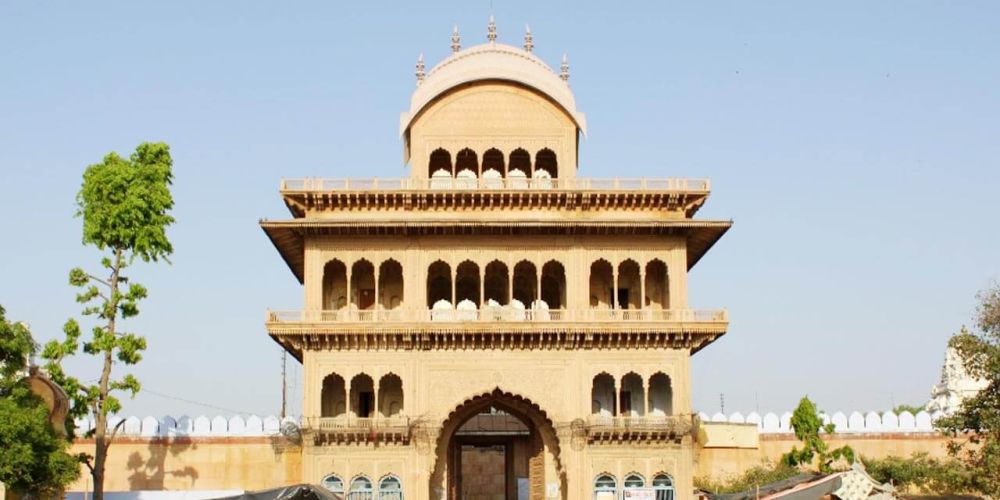

The Sri Ranganatha Temple, fondly known as Rangaji Temple, is one of the most renowned temples in Vrindavan, a town synonymous with the playful aspects of Lord Krishna. Dedicated to Lord Vishnu and his consort, Goddess Lakshmi, the temple boasts of South Indian architecture and is revered by devotees from across the nation and the globe. The temple's foundation was laid in 1851 and its construction completed in 1855 by the philanthropist and statesman, Sri Rangadeshik Swamy. It is the largest temple in the northern part of India and follows the rituals and traditions akin to the Sri Ranganathaswamy Temple in Srirangam, Tamil Nadu.
Over the years, the temple has become a major pilgrimage spot for Vaishnavites and attracts a large number of tourists annually. The Annual Brahmotsavam, modeled after the South Indian festival, which includes processions of deities on different vahanas (vehicles), has been instrumental in attracting visitors far and wide. The appeal of this grand festival, along with the daily rituals and the intricately designed temple structure, has greatly contributed to the temple's popularity as a tourist destination.
The temple's architecture stands out for its Dravidian style, having a Gopuram that is reminiscent of the temples from South India. The fine detailing and carvings of the Rangaji Temple offer an enchanting sight and provide a unique blend of North and South Indian cultures in one spiritual hub. This fusion not only appeals to a broad spectrum of devotees but also to history enthusiasts and architecture aficionados.
Surrounding the main temple complex is the magnificent garden or Prakaram. The garden is very well kept and blooms with a variety of flowers that are used for daily worship. Walking through the garden is said to be a serene experience, allowing visitors to absorb the tranquility and essence of spirituality permeating the atmosphere.
With the rise of spiritual and experiential travel, the Rangaji Temple has seen an influx of tourists seeking immersive cultural experiences. Yoga and meditation retreats in and around Vrindavan have become increasingly popular. The temple's serene environment provides an excellent backdrop for these spiritual practices. The local government and hospitality sector have adapted to cater to this trend, offering various accommodation options and cultural engagement activities.
Tourists and pilgrims visiting the Rangaji Temple are welcomed throughout the year, but the best time to visit is during the cooler months from October to March. The temple is open every day, with special timings for darshan. Additionally, international visitors often coordinate their visits to coincide with other major festivals in Vrindavan to capture the vibrant essence of this spiritual land. It is recommended that visitors dress modestly and respect the local customs and religious sentiments while exploring the temple premises.
Today, Sri Ranganatha Temple serves not just as a place of worship but also as a beacon of cultural heritage and tourism in Vrindavan. Its history and continuing journey as a major destination point stands as a testament to its timeless appeal and significance in the tapestry of Indian religious and touristic landmarks.